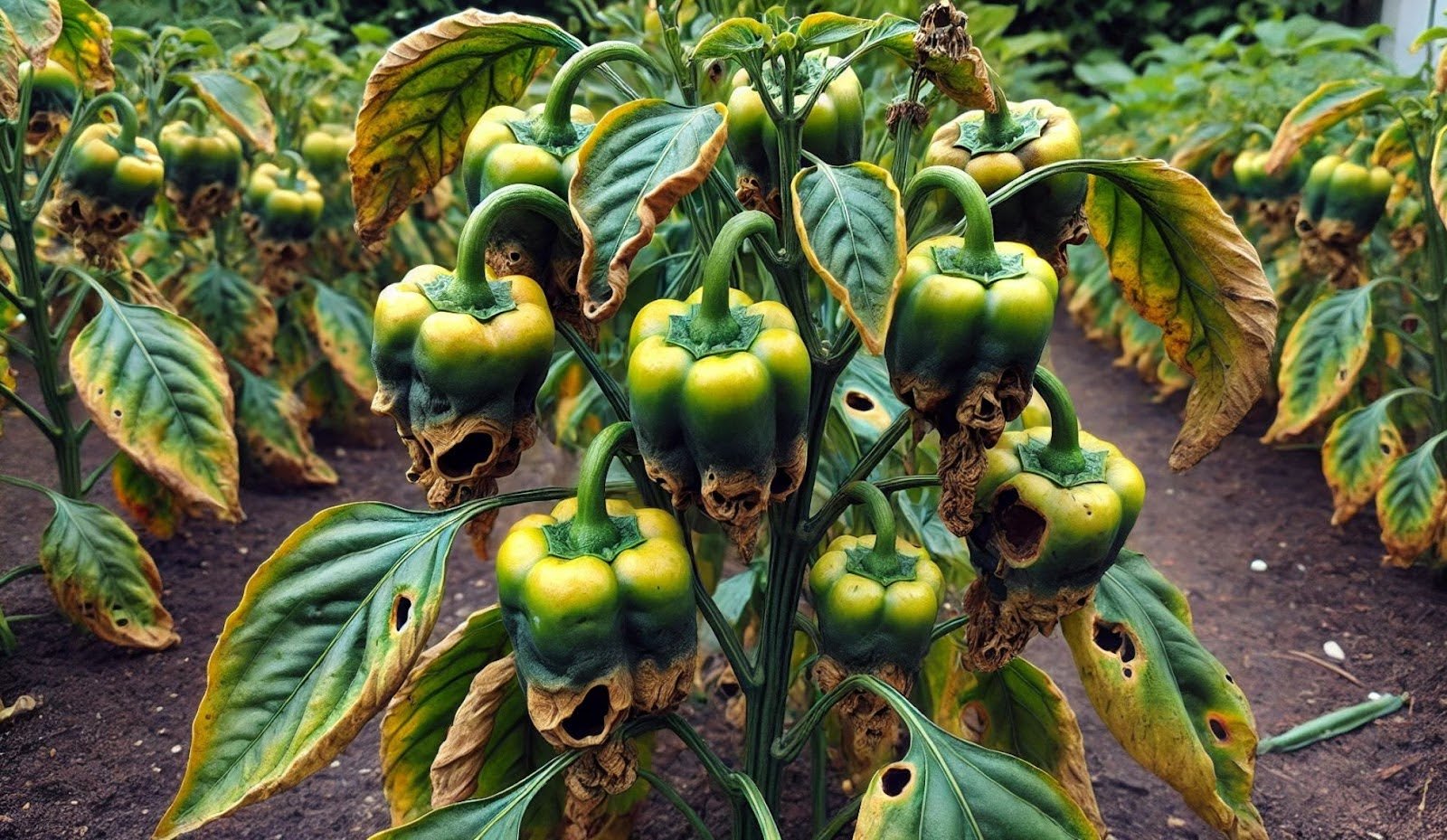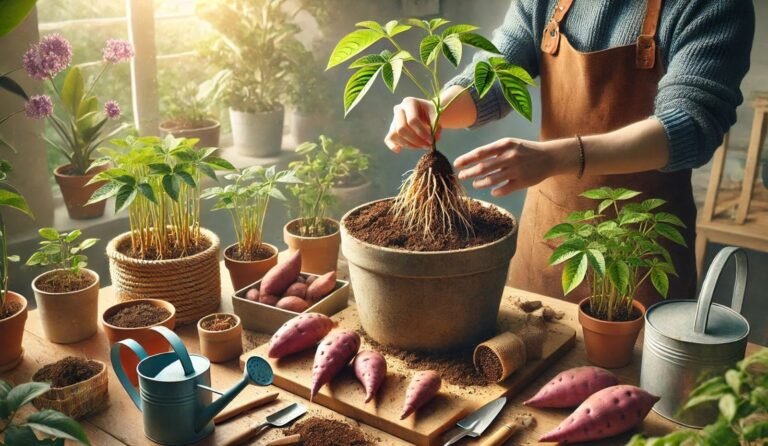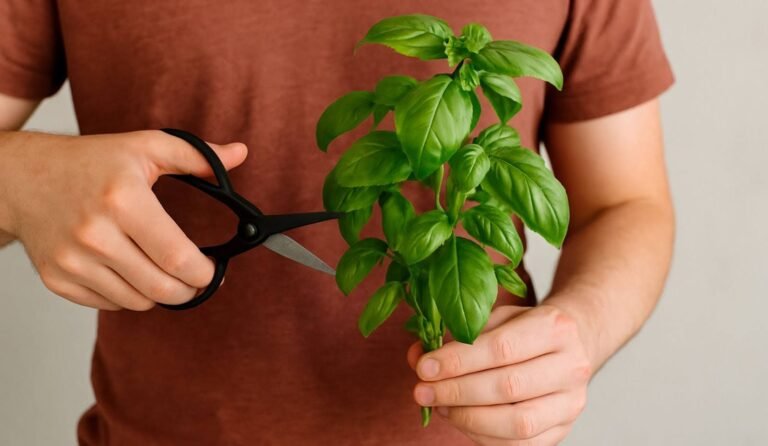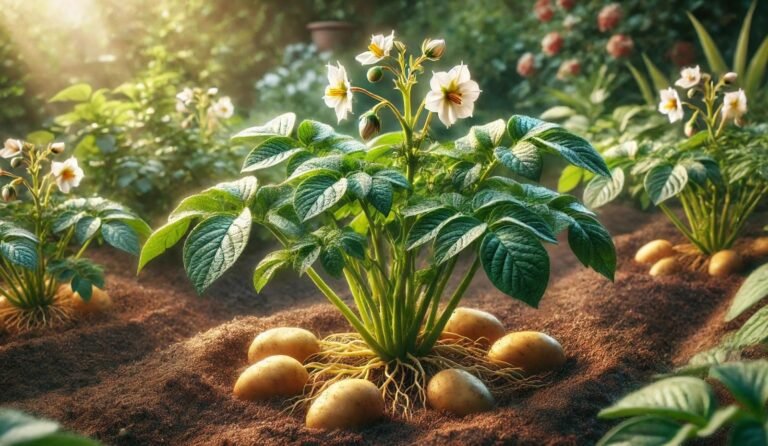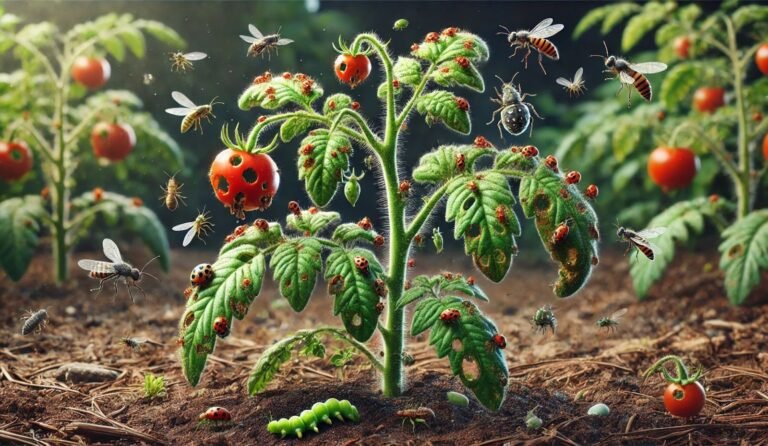Calcium Deficiency in Pepper Plants: Causes, Symptoms, and How to Fix It
Calcium deficiency in pepper plants can turn your gardening dreams into a frustrating mess. Soft, rotting peppers, curled leaves, and stunted growth—sound familiar? Without enough calcium, your plants struggle to develop strong roots and fruits. The worst part? Even if your soil has calcium, your plants might not be absorbing it! Don’t worry—I’ll break down exactly what’s going wrong and how to fix it fast. Let’s get those peppers back on track!
Why Calcium Matters for Pepper Plants
Think of calcium as the foundation of a strong house. Just like a house needs a solid base to stand tall, pepper plants need calcium to build strong cell walls and develop properly. Without enough calcium, plant tissues become weak, and growth slows down. This essential nutrient plays a major role in root development, fruit formation, and overall plant strength.
One of the biggest problems caused by calcium deficiency is blossom end rot. This condition leaves dark, sunken spots on the bottom of your peppers, making them look spoiled and inedible. It’s a heartbreaking sight for any gardener, especially after putting in so much effort to grow healthy plants.
But calcium does more than just protect against blossom end rot—it helps strengthen stems, improves root absorption of other nutrients, and even makes plants more resilient against stress and pests.
When calcium is missing, plants don’t just look unhealthy—they become more prone to environmental stress, drought, and pest infestations. And if you’ve been struggling with aphids on pepper plants, weak, calcium-deficient plants could be part of the problem.
How to Identify Calcium Deficiency in Pepper Plants
Calcium deficiency isn’t always obvious at first. It often starts with small changes that might seem like normal plant behavior, but over time, the symptoms become more severe. The most common sign is blossom end rot, which causes dark, leathery patches to form on the bottom of your peppers. At first, these spots may be small, but they grow quickly, ruining the fruit.
Beyond blossom end rot, calcium deficiency also affects the leaves and overall plant growth. Young leaves might appear curled, distorted, or stunted, and stems may become weak and unable to support the weight of the plant. If your pepper plants seem to be growing at a frustratingly slow pace, lack of calcium could be the reason.
Another sign to watch for is an increased presence of pests, especially aphids on pepper plants. Weak, calcium-deficient plants struggle to maintain strong cell walls, making them more vulnerable to pest infestations.
Aphids thrive on stressed plants, sucking the sap from the leaves and further weakening the plant’s health. If you’re dealing with constant aphid problems despite using natural remedies, your plants might not be absorbing enough calcium to defend themselves.
What Causes Calcium Deficiency in Pepper Plants?
So, why does calcium deficiency happen in the first place? The frustrating part is that your soil might actually contain enough calcium—but if the conditions aren’t right, your plants won’t be able to absorb it. One major factor is soil pH imbalance. If your soil is too acidic (below 6.0) or too alkaline (above 7.5), the calcium in the soil becomes locked away, out of reach for your plants.
Another big cause is inconsistent watering. Calcium moves through plants with water, so if your watering schedule is all over the place—alternating between drought and overwatering—your plants won’t be able to absorb it properly. This is why blossom end rot often appears after dry spells or sudden heavy rain.
Overuse of fertilizers can also play a role. Too much nitrogen or potassium can interfere with calcium uptake, essentially blocking the plant from getting the nutrients it needs. Many well-meaning gardeners make the mistake of over-fertilizing, thinking they’re helping their plants, when in reality, they’re making it harder for them to absorb calcium.
Lastly, poor root health can prevent plants from accessing calcium. If your soil is too compacted or if your plant’s roots are damaged from transplant shock, they won’t be able to take in enough nutrients, no matter how much calcium is present in the soil.
How to Fix Calcium Deficiency in Pepper Plants
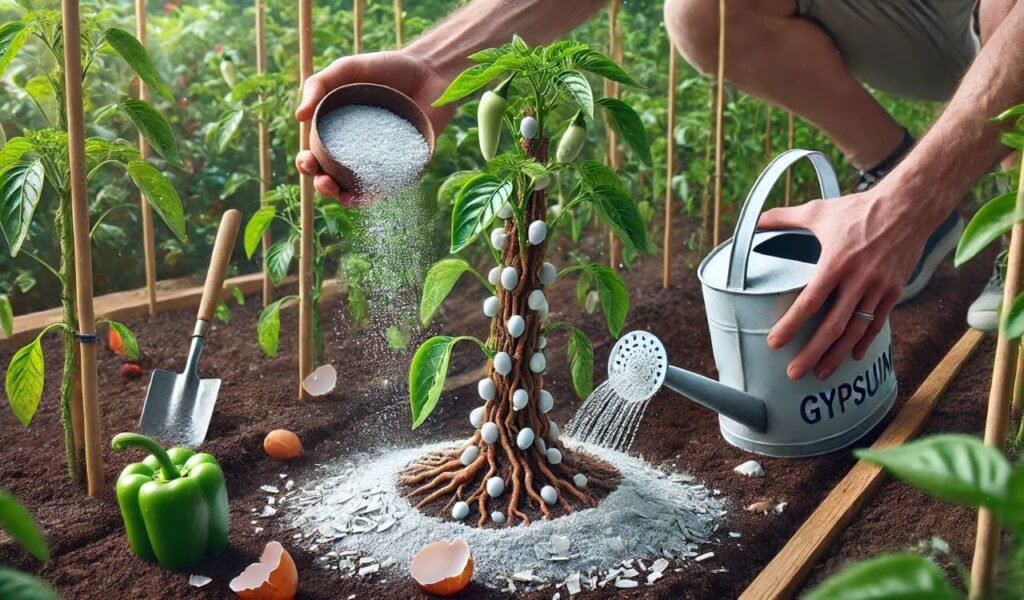
Now that you know what causes calcium deficiency, let’s talk about how to fix it. The first step is to test your soil pH. You can buy an inexpensive soil test kit online or at your local garden center. Ideally, your soil should have a pH between 6.2 and 6.8 to allow for proper calcium absorption. If your pH is too low, add lime to raise it. If it’s too high, add peat moss or sulfur to lower it.
Once your soil is at the right pH, it’s time to add calcium. There are several ways to do this, depending on how quickly you need results. If you want a fast fix, use calcium nitrate or a liquid calcium spray. These solutions get absorbed quickly and can help correct the deficiency in new growth.
For a more natural approach, you can add crushed eggshells, bone meal, or gypsum to the soil. These options take longer to break down but provide a steady source of calcium over time. If you’re already growing your plants in pots, consider switching to a high-calcium potting mix or adding dolomite lime to your soil mix.
Watering constantly is also key. Pepper plants should be watered deeply and regularly, but not to the point where the soil stays soggy. Using mulch can help retain moisture and prevent sudden drying, which often leads to calcium uptake problems.
Preventing Calcium Deficiency in the Future
The best way to deal with calcium deficiency is to prevent it from happening in the first place. Regular soil testing can help you catch pH imbalances before they cause problems. Adding organic matter like compost or aged manure will improve soil structure and ensure a steady supply of nutrients.
It’s also important to choose fertilizers carefully. Instead of using high-nitrogen or potassium-heavy fertilizers, opt for balanced fertilizers with added calcium. Look for products labeled as “Tomato & Pepper Fertilizer” or those containing calcium nitrate.
Watering habits play a huge role in preventing calcium deficiency. Try to maintain even moisture levels and avoid letting your soil dry out completely before drenching it again. Mulching with straw or wood chips can help regulate soil moisture and reduce fluctuations.
If pests have been a problem, focus on keeping your plants strong and healthy. Weak plants attract aphids, so making sure your peppers get enough calcium can actually reduce pest problems naturally. Companion planting with herbs like basil and marigolds can also help deter aphids and other pests.
FAQ
What causes calcium deficiency in pepper plants?
Calcium deficiency is usually caused by imbalanced soil pH, inconsistent watering, or excess nitrogen or potassium in fertilizers.
How do I know if my pepper plant lacks calcium?
Look for blossom end rot (dark spots on peppers), curled leaves, weak stems, and stunted growth.
Can I fix calcium deficiency naturally?
Yes! Use crushed eggshells, bone meal, or gypsum to boost calcium naturally.
How often should I water to prevent calcium deficiency?
Water consistently and deeply, avoiding overwatering or dry spells that block calcium absorption.
Does soil pH affect calcium availability?
Yes! Pepper plants absorb calcium best at a soil pH between 6.2 and 6.8.
Will too much fertilizer cause calcium deficiency?
Yes, high nitrogen or potassium fertilizers can block calcium uptake. Use a balanced fertilizer instead.
How long does it take to fix calcium deficiency?
It depends, but you may see improvements in new growth within a few weeks after adding calcium and adjusting watering.
Final Thoughts
Dealing with calcium deficiency in pepper plants can be frustrating, but the good news is that it’s completely fixable. By understanding the causes and symptoms, you can take quick action to get your plants back on track. Whether it’s adjusting your soil pH, improving your watering routine, or adding calcium-rich amendments, small changes can make a huge difference.
With the right care, your pepper plants will grow stronger, healthier, and more productive, producing beautiful, flavorful peppers that are free from blossom end rot. So, if your plants have been struggling, don’t give up—just tweak a few things, and you’ll be back on the path to a thriving pepper garden in no time!
By taking care of your plants and providing them with the nutrients they need, you’ll enjoy stronger plants, better fruit production, and fewer problems with pests like aphids. Happy gardening!

